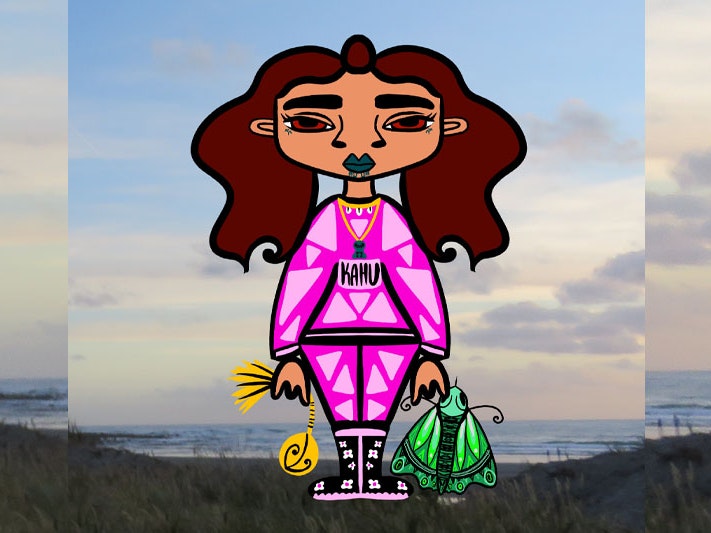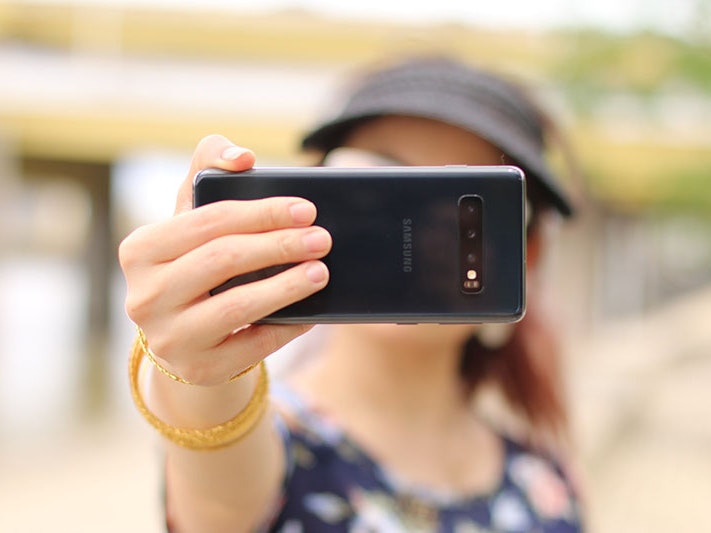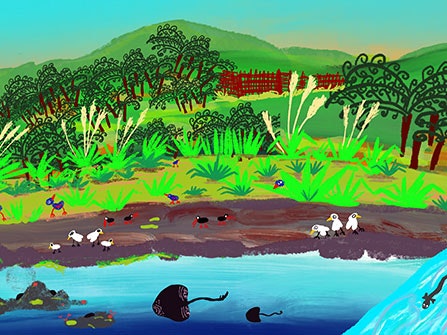
Rich task 4: I am avatar
Use both technology and adornment to create fantastical avatar superheroes.
Free museum entry for New Zealanders and people living in New Zealand
Open every day 10am-6pm
(except Christmas Day)
Free museum entry for New Zealanders and people living in New Zealand
Connect with the diversity of your local community through the creation of a time-based video portrait series.
We are engaging with a wide variety of people in our community through the creation of video portraiture.
Through these activities, learners will:
develop an awareness of the identities, languages, and cultures of those who surround them
expand their interview skills, through the creation and implementation of interview questions
use appropriate technology and practices to capture and edit video portraits of members of their community
consider permissions that are required for the capture and reuse of someone’s image in a digital environment.
Reihana worked in collaboration with a number of Pacific, Māori, and Aboriginal communities to ensure that identity, language, and culture was represented in a way that felt authentic to those who were being represented in her work. Within this rich task, learners use similar methodologies to capture the diversity of story and experience that might exist within their local setting.
In this activity, learners will use an artist’s model to inform their art practice.
Chevron Hassett (Ngāti Porou, Ngāti Rongomaiwahine, Pākehā) is a video artist from Wellington, who has produced a number of compelling video portraits communicating ideas around identity, community, and place-based ideas of belonging. Have a look at the embedded video above, a preview of his artwork Home is where my heart will rest, and discuss the following:
what do you think Hassett is communicating? What does the title mean to you?
at the heart of Hassett’s practice is the essential spirit of whanaungatanga, the Māori concept of connecting, building, and maintaining relationships within communities. How is this communicated in his work?
what can you tell about the people in his work? In what ways does he use setting, sound, and landscape to help tell the story of who these people are and what is important to them?
Brainstorm together the diversity of people within the local community. Encourage learners to think of diversity here as broadly as they can – what are all the different ways in which humans are thriving in the neighbourhood? Think of young and old, culture and heritage. Learners might want to consider the multiple occupations that exist, the multiple ways in which families are made up, or the ways in which gender identification is communicated too. Learners might consider the ways in which houses, and places of work, also provide useful clues for communicating identity.
Imagine together a video portrait series to communicate this diversity. How can learners use the digital tools available to capture and tell the story of those around them? This will look different in different contexts, and depend too on the ages of learners.
Learners plan correspondence, such as letters, emails, or a phone calls, to a sample of the community, asking them if they would like to take part in the video portrait story. Participants will need to know:
what learning is happening as a result of the process
what their involvement might be
how long learners might need them for
the way in which their portrait will be used once it has been captured.
Once a range of participants have been confirmed, the first step in Hassett’s work is authentic connection. This will happen in different ways depending on the context, but ideally would be kānohi ki te kānohi. Through connecting with and interviewing participants, learners consider the personal stories of the people and the ways in which these could best be captured in a video portrait.
They might want to consider, in active discussion with the participant, how they can visually tell the story of identity – what would be the ideal setting? the ideal costume or adornment? what is the soundscape?
In this activity, learners use appropriate technologies to create video portraits.
Using the video technologies that are available (for example, tablets or smartphones) learners capture video of participants that tell the stories of identity, culture, and heritage that they developed in Activity 1.
Learners may decide to use a repeating device to provide a connection between portraits. Examples could include everyone:
holding their most precious taongastanding in front of their house or their place of work
layering a piece of recorded audio interview over the top
wearing clothes or adornments that speak to their identity
standing in their favourite place within their community
standing with their family around them.
In this activity, learners use green screen technology to play around with ideas of identity and place.
Reihana used green screen technology to play with landscape, ideas of where we belong, and the perspectives we have from that place. There is a huge opportunity here for learners to play around with similar ideas and devices by using simple green screen technology.
Post-production, in Pursuit of Venus [infected], 2014. Lot23. Courtesy of the artist
Create a DIY green-screen in your own classroom, so that students can video themselves. They could read a poem or lines from a song, or perform something they adore, or simply recite the simple facts of who they are.
Once learners have green screen footage of themselves, learners could drop themselves in front of a chosen historical scene, textile, or landscape that is relevant to their cultural history. Or learners could play with placing themselves back into a family photograph and talking to a previous version of themselves or a family member.
How does technology assist in the storytelling of identity?
What is the role of a video artist? How does it differ from painter or sculptor?
Why do you think it is important to collaborate closely with the community groups that contributed to the work? How does this change what is presented?

Use both technology and adornment to create fantastical avatar superheroes.

Examine a selfie portrait image and manipulate aspects of adornment to reflect on how identity is communicated.

Inspire others with what you have done! Email us with your learning so we can celebrate and share your awesome mahi!